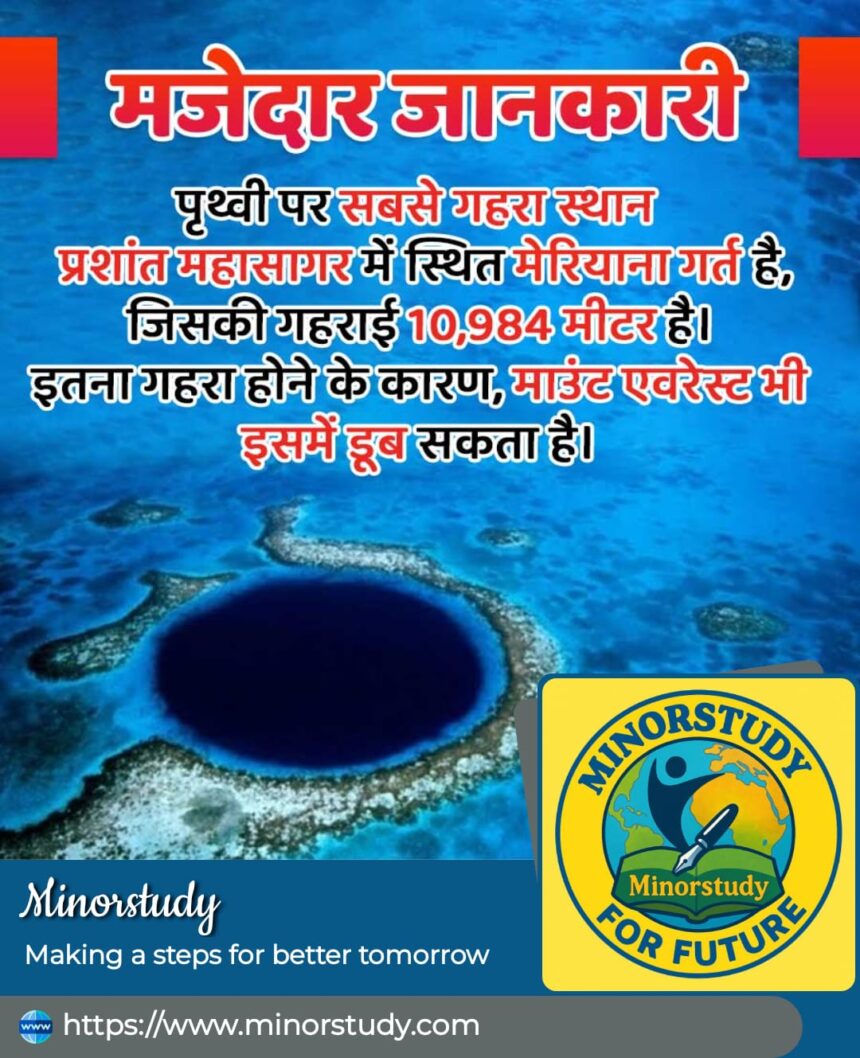7 Mind-Blowing Facts About the Mariana Trench – Earth’s Most Mysterious Depth
When we think about the highest point on Earth, our mind immediately goes to Mount Everest. But what about the deepest? Welcome to the Mariana Trench, an underwater marvel that is not just the deepest part of the world’s oceans but also one of the most mysterious, extreme, and awe-inspiring places on the planet.
- History of the Mariana Trench
- 7 Fascinating Facts About the Mariana Trench
- 1. It’s Deeper Than Everest is Tall
- 2. Named After a Queen
- 3. Extreme Pressure
- 4. Alien-Like Life Forms
- 5. Temperature and Darkness
- 6. Part of the Ring of Fire
- 7. Still Not Fully Explored
- Timeline of the Mariana Trench
- Significance of the Mariana Trench
- Observance in Daily Life
- Wishing / Positive Note
- Important Points
- Importance in Our Life
- Importance to Society
- FAQs About the Mariana Trench
- Conclusion & Daily Life Impact
Located in the western Pacific Ocean, east of the Philippines and south of Japan, the Mariana Trench plunges to a depth of around 10,984 meters (36,037 feet)—deep enough to swallow Mount Everest with over a kilometer to spare.
History of the Mariana Trench
The Mariana Trench was named after the Mariana Islands, which were themselves named in honor of Queen Mariana of Austria in the 17th century by Spanish explorers. The trench has fascinated scientists for decades due to its extreme conditions and the mysteries it holds.
1875 – HMS Challenger Expedition: The first recorded measurement of the trench was made using a weighted rope during the British HMS Challenger expedition, estimating a depth of over 8,000 meters.
1951 – Challenger II Survey: The British ship Challenger II pinpointed the trench’s deepest part, now called the Challenger Deep.
1960 – First Human Descent: Swiss oceanographer Jacques Piccard and U.S. Navy Lieutenant Don Walsh made the first manned descent in the bathyscaphe Trieste.
2012 – James Cameron’s Solo Dive: The filmmaker made a historic solo journey to the bottom, documenting the alien-like environment.
Ongoing: Modern robotic submersibles continue to explore the trench, revealing new species and geological insights.
7 Fascinating Facts About the Mariana Trench
1. It’s Deeper Than Everest is Tall
Mount Everest stands at 8,849 meters, but the Mariana Trench reaches 10,984 meters—meaning Everest could fit inside with room left over.
2. Named After a Queen
It is named after Queen Mariana of Austria, a 17th-century Spanish royal, through the naming of the Mariana Islands.
3. Extreme Pressure
At its deepest point, the water pressure is over 1,000 times atmospheric pressure at sea level—equivalent to a human holding 50 jumbo jets.
4. Alien-Like Life Forms
Despite the darkness and extreme conditions, unique organisms such as amphipods, snailfish, and bacteria thrive there.
5. Temperature and Darkness
It’s perpetually dark, with near-freezing temperatures around 1-4°C.
6. Part of the Ring of Fire
The trench lies within a tectonically active area, linked to volcanic activity and earthquakes.
7. Still Not Fully Explored
We know more about the Moon’s surface than we do about the depths of the Mariana Trench.
Timeline of the Mariana Trench
| Year | Event |
|---|---|
| 1875 | First measurement by HMS Challenger expedition. |
| 1951 | Challenger II maps the deepest point—Challenger Deep. |
| 1960 | Trieste’s manned descent to the bottom. |
| 1995 | Japanese unmanned probe Kaiko explores the trench. |
| 2009 | U.S. Navy sends Nereus, a hybrid remotely operated vehicle. |
| 2012 | James Cameron’s solo descent in Deepsea Challenger. |
| 2019 | Victor Vescovo’s record-breaking multiple dives to Challenger Deep. |
Significance of the Mariana Trench
Scientific Importance: Studying life forms here could help us understand extreme environments, even on other planets.
Environmental Significance: It’s a natural carbon sink, possibly storing carbon in deep-sea sediments.
Geological Significance: The trench is a subduction zone where tectonic plates meet, crucial for understanding earthquakes and volcanic activity.
Cultural Significance: Symbolizes mystery, depth, and unexplored territory—sparking curiosity and inspiration.
Observance in Daily Life
We might never visit the trench, but its study affects us in unexpected ways:
Technology: Deep-sea exploration pushes innovation in robotics, engineering, and material science.
Climate Understanding: Studying deep oceans improves climate models.
Inspiration: Its mystery drives documentaries, books, and educational programs.
Wishing / Positive Note
🌊✨ May your curiosity be as deep as the Mariana Trench and your dreams as limitless as the ocean itself. ✨🌊
Important Points
Depth: ~10,984 meters
Location: Western Pacific Ocean
Pressure: 1,000+ times sea level pressure
Temperature: 1–4°C
First Human Descent: 1960 by Trieste
Not Fully Explored: Less than 5% explored
Importance in Our Life
Even though we live on land, our planet’s oceans—especially deep areas like the Mariana Trench—affect our survival. They regulate climate, absorb carbon, and host biodiversity that could lead to breakthroughs in medicine and technology.
Importance to Society
Environmental Protection: Highlights the need to protect deep oceans from pollution.
Scientific Research: Offers clues about Earth’s history and potential extraterrestrial life.
Educational Impact: Inspires new generations to pursue marine science and conservation.
FAQs About the Mariana Trench
Q1: How deep is the Mariana Trench?
About 10,984 meters at Challenger Deep.
Q2: Can humans survive there without equipment?
No, the pressure and temperature make it impossible without specialized submersibles.
Q3: What creatures live in the trench?
Species like amphipods, snailfish, and extremophile bacteria.
Q4: Is it dangerous?
For humans, yes—due to extreme pressure. But for scientists with proper tech, it’s an exciting research site.
Q5: Can we explore it completely?
Not yet—technology and cost are major challenges.
Conclusion & Daily Life Impact
The Mariana Trench is more than just the deepest place on Earth—it’s a symbol of human curiosity and resilience. Every dive into its darkness brings new knowledge, fuels innovation, and reminds us how much of our planet is still a mystery.
In our daily lives, this fact teaches us that there’s always more beneath the surface, whether in people, nature, or knowledge itself. Just as the trench hides life in its cold, dark depths, our world hides wonders waiting to be explored.








